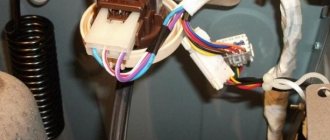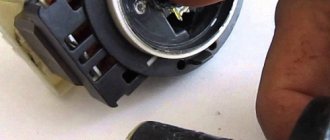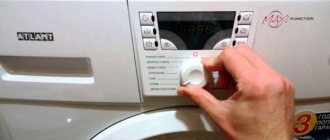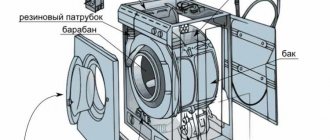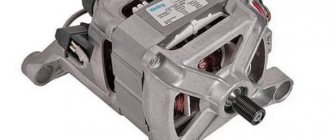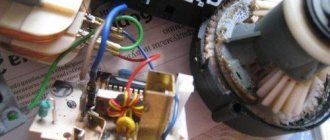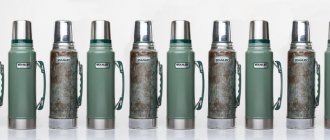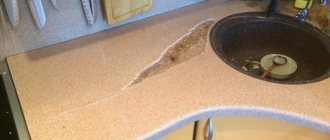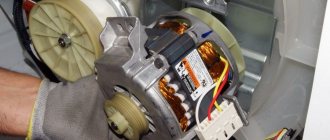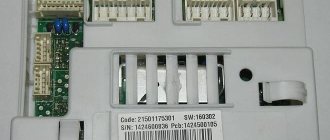If you love automatic washing, you also love fixing your machine! This is exactly how any owner of a washing machine could paraphrase the famous saying.
Zanussi brand units are no exception. Although there is no reason to complain about the quality of these machines, they sometimes present an unpleasant surprise. So, Zanussi - washing machine: faults and do-it-yourself repairs.
DIY Zanussi washing machine repair
Some types of breakdowns in such complex equipment as a washing machine can only be corrected by a well-trained specialist.
But such malfunctions occur relatively rarely. In most cases, failures in the operation of Zanussi cars are due to very banal reasons, which the owner himself can cope with.
Let us list the weak points of these units:
- Dependence on water quality: this feature, it must be said, is characteristic of all washing machines. At high temperatures, the hardness salts present in the water are intensively deposited on the heating element in the form of scale, and dirt and rust clog the filters, as a result of which the collection of fresh water and the removal of waste water slows down or completely stops.
- Poorly thought out design of the locking device on the hatch: in Zanussi cars this mechanism, as well as its sensor, are clearly unfinished and fail very often.
- Heating element: some experts believe that the heater in these machines is especially susceptible to scale formation due to the poor choice of tube material.
- Drive belt: another relatively unreliable element. Zanussi owners should check the condition of the belt at least once every 4 years, tightening or replacing if necessary.
Now let's look at the typical symptoms that manifest themselves in certain malfunctions.
Typical breakdowns
Having studied statistical data from service centers that repair Zanussi washing machines, we can identify several typical problems for this brand:
- Related to water quality. Tap water in Russia is characterized by increased hardness. And there are problems with cleanliness - because of old pipes. As the water is heated to 90–95 degrees, a sediment forms—scale. Due to the sediment, the tubular electric heater (TEH) does not transfer heat well and overheats. Dirt and rust particles contained in the water clog the filters - the water intake and drainage system suffers.
- UBL (hatch blocking device). This unit breaks more often due to the fault of the manufacturer. There are obvious shortcomings here - the UBL and the sensor in the Zanussi SM fail more often than in devices of competing brands.
- heating element. Burns out due to scale buildup. In addition, it has a limited service life and may burn out after 3-5 years of intense use. But experts also assure that the heating elements of this brand have poorly selected components from which the tubular part is made.
- Drive belt. This element cannot boast of reliability. It is recommended to check the belt for integrity and tension once every three months. If there are stretch marks (damage), it will have to be tightened or replaced.
Drum doesn't move
If you can clearly hear that the engine is running, then the problem is most likely in the drive belt. To inspect it, you need to remove the back panel of the machine body by unscrewing the screws that secure it.
Next we act on the situation:
- If the belt has come off one of the pulleys, it needs to be put back in place.
- If the belt breaks, you need to purchase and install a new one.
- If the belt is intact and in its place, but does not transmit rotation due to slipping, it means that it has exhausted its service life and must also be replaced.
If, during inspection, you find that the electric motor pulley does not rotate, it means that there is a more serious breakdown and you need to contact a service center.
Hatch lock
Let's consider two situations:
The washing is completed, but the hatch still cannot be opened
If the lock is jammed, the hatch can be opened using the emergency cable by pulling it towards you. You can find it behind the bottom panel (you need to unscrew it), on the right, near the filter. The cause of the malfunction lies in the electronics, so you will have to contact a workshop.
The hatch won't close
The latches that hold the hatch in the closed position are made of fragile plastic, so they often break.
To make sure that this is the case, you need to disassemble the lock:
- Having opened the hatch, unscrew the two screws that secure the lock to the body;
- remove the hatch seal (cuff), having first removed the clamp holding it (you need to pry it off with a screwdriver);
- After removing the cuff, the lock can be pulled out.
If the plastic parts of the mechanism are really broken, you need to purchase a new lock and install it in place.
To make the lock last longer, close the hatch as gently as possible.
Self-draining device
The situation when, simultaneously with the collection of water, it is discharged through the drain hose (before the drum begins to rotate), may be due to the low location of this hose. Its free end should be raised by 50 - 70 cm.
Self-draining will also occur if the drain pipe is damaged, only in this case the water will not flow out of the hose, but from under the machine.
More serious causes are failures in the control module or level sensor, which mistakenly turn on the drain pump.
Water does not fill
We are looking for the cause of the malfunction:
- First you need to make sure that the water has not been turned off.
- Next, you need to check the capacity of the filling hose by disconnecting it from the machine and turning on the water supply.
- If water flows through the hose properly, install it in place and check the condition of the filter. Together with the filling valve, it is located in the place where the hose enters the unit body. After removing the top cover, the assembly (valve + filter) must be unscrewed, after which the filter can be disassembled and cleaned.
Cleaning filters, both inlet and outlet, must be done regularly, without waiting for problems to arise.
If the water supply has not resumed, you need to check the functionality of the filling valve. The resistance of its winding should be 3.75 kOhm, and when the voltage indicated on the case is applied to the contacts, the device should open. A malfunctioning valve must be replaced.
This problem may also indicate that the level sensor is broken or its tube is clogged.
In many cases, the owner of the washing machine can repair it himself. Repairing a Bosch washing machine yourself - an overview of the main types of breakdowns and methods for eliminating them.
What criteria should be taken into account when choosing a shower cabin, read in this topic.
Failure of the heating element, wear of the bearing, failure of the control unit - these types of faults in washing machines are the most common. Here https://aquacomm.ru/cancliz/mnogokvartirnyie-doma/santehnika/stiralnaya-mashina-indezit-neispravnosti-remont-svoimi-rukami.html you will learn how to fix Indesit machine breakdowns yourself.
What types of malfunctions are there?
There are many possible problems that can affect the performance of your washing machine. Let's look at popular problems with the Zanussi washing machine and how to fix them.
Drum doesn't move
The drum may jam during operation, which will naturally lead to disruption of the functionality of the equipment. The reason may be various mechanical inclusions that get inside with loaded items.
The hatch is blocked
Locking the hatch will not allow you to open the machine chamber and load clothes into it. In this case, the problem most often lies in the jamming of the lock, which will have to be removed manually.
Self drain is broken
Lack of water drainage may be due to clogged filters or drain system. Cleaning all key elements solves the problem.
Water does not fill
If water does not fill into the tank during operation, the problem may be low pressure, a faulty valve, or a broken control unit. The last option is quite rare in practice and can be solved by replacing the module.
Increased speed
Rapid operation of the motor indicates a malfunction of the tachometer, a malfunction of the control module, or poor tension of the drive belt. In this case, the drum begins to move too quickly, which threatens the reliability of the entire system.
No water heating
The heating element is responsible for heating the water in the washing machine. Its malfunction will naturally prevent the device from using heat during operation. Also, sometimes the water level sensor may not allow you to enable the option. You can solve such problems yourself by replacing components. If this does not help, it is better to contact a specialist.
Puddle formation
Puddles under the machine form when the pipe leaks, the cuff is damaged, or simply wear out the gaskets on the key components of the machine. This is one of the simplest problems that can be solved without major investments.
Rumble during spin cycle
Loose drum mounts, broken counterweight, or other similar factors may cause the unit to not operate smoothly. The result is constant shaking and rumble during washing, which is especially audible during the spin cycle. First of all, in this case, it is important to check all bolts and fasteners for their tightness.
Increased speed
The first step in such a situation is to check the serviceability of the engine and the integrity of the power circuit.
Without sufficient experience it will be difficult to do this, so it is better to contact a service center.
Here, if necessary, they will check the correct operation of the control module circuit - perhaps it is sending incorrect commands to the device.
No water heating
Most often, the cause of such failures is the breakdown of the heating element - due to natural wear or due to scale accumulation. Follow these steps:
- After unscrewing the fasteners, remove the back panel of the case.
- Check the resistance of the heating element using a multimeter (its shank with the wires connected to it protrudes from the tank in its lower part). At room temperature, the device should show 30 ohms.
- If the resistance is different from normal, the heating element must be replaced. The wires are disconnected from it, and then the nut located between the contacts is unscrewed. After this, the heater can be pulled out. This should be done with caution, gently rocking the element and without applying excessive force. If the heating element is stuck and does not budge, you need to soften the scale with WD-40 liquid. After dismantling the heater, its seat needs to be cleaned, after which a replacement can be installed. The new heating element must match this model of washing machine. A heating element from another model may burn out, along with the control module.
- If the resistance measurement shows that the heating element is working properly, you need to check the condition of the temperature sensor. Its performance is also checked by measuring resistance. At room temperature it should be 5.7 - 6.3 kOhm.
The reason may also be the “sticking” of the contacts of the heating element relay located near the control module.
Failure of the control module - from 2300 rubles*
The module, which is also called an electronic controller or board, is a microcircuit with radio elements. It controls the operation of the washing machine. It contains all washing programs. The main reasons for control unit failure are power surges and moisture ingress. As a result, tracks or contacts on the board burn out and/or oxidize, radio elements burn out, and the firmware gets lost.
SIGNS
Signs of module failure are very varied: from the lack of spin to the reluctance of the Zanussi washing machine to turn on. The most common of them are the following. Machine:
- does not turn on;
- the drum does not spin;
- does not drain;
- does not erase;
- does not heat water;
- knocks out the machine gun;
- The programs at SMA Zanussi are going astray.
HOW TO FIX
The technician uses a multimeter to ring the elements and tracks of the microcircuit. Finds faulty ones. Burnt out elements are replaced with new ones, the tracks are soldered. If a firmware failure occurs (due to a power surge), the module memory is soldered off, reprogrammed using special equipment and soldered back in.
If there is significant damage to the control unit, it is completely replaced.
*Control module repair prices are for labor only, components or a new unit are paid separately.
Puddle formation
If water is detected under the washing machine, the following components should be checked:
- Gasket at the connection point of the filling hose. If excessive wear occurs, it must be replaced.
- Hatch seal. Over time, this element may become deformed or crack. To dismantle a worn cuff, it is necessary to remove the clamp holding it. It fits quite tightly, but if you pry it with a screwdriver, it comes off quite easily.
- The drain pipe or the location where the drain hose is attached to the pump. If there is damage in this area, water will begin to seep in as the machine fills. A damaged part - a hose, pipe or pump - must be replaced.
- Car tank. Leaks may be due to its depressurization.
In the latter case, specialized equipment will be needed for repairs, so you will have to contact a service center.
Recommendations for replacing parts and assembling a Zanussi washing machine
After repair, reassemble the Zanussi washing machine in the reverse order. If photographs were taken during the work, it is recommended to check them, especially when connecting wiring, in order to avoid mistakes.
If the tank was disassembled, then during reassembly the joints of both halves should be carefully coated with silicone sealant that can withstand aggressive environments and high temperatures. After assembly, the machine should sit for the amount of time recommended by the sealant manufacturer to allow it to dry completely.
In addition to replacing the main part, you need to carry out preventive maintenance on other components of the washing machine: descale the heating element, tank, inspect and clean the shaft and cross, etc.
After the machine has stood for the time required for the sealant to harden, it should be connected to the communications and a test wash should be performed, adding a small amount of powder. If during the execution of the program there are no water leaks under the washing machine, the equipment behaves correctly, there are no signs of malfunction, this indicates that disassembling and repairing the device was successful.
Error codes
The machine itself informs the user about some breakdowns by displaying a special alphanumeric sequence on the display - an error code. Here are some of them:
- E11 – insufficient water supply during washing. As already mentioned, you need to check the water fill path, filter and valve.
- E13 - there is a water leak into the pan.
- E21 – problems with draining water. Most likely the drain filter needs to be cleaned. Along with clothes, sand, seed husks and other small debris, buttons, pins and other small objects can get into the machine, so it is recommended to clean the drain filter after every 3 washes. If this measure does not give a positive result, it is necessary to check the functionality of the pump. The resistance of its winding should be approximately 170 Ohms.
- Codes E23 and E24 indicate a malfunction of the control semistor of the drain pump in the control module.
- E35 - the water level in the tank has exceeded the permissible threshold. The most likely cause is a broken level sensor or a clogged tube.
- E41 - E45 indicate a malfunction of the hatch lock or its blocking elements.
A washing machine breakdown is not that uncommon. Some brands of units have their weak points. Kandy washing machine - do-it-yourself repair of basic faults, read on.
We will analyze the types of mixer taps and the features of their design in this material.
Codes and their meaning
If the E11 code comes on, then the reason is low pressure. It may even be that the tap is closed or the inlet valve is clogged. With code E12, the reason lies in the water supply valve. Usually appears within 12 minutes after the drying process begins.
E21 appears when there is a problem in the drain filter or in the pipes. They need to be cleaned and the pump and impeller checked. E22 indicates a low level of water drainage during the drying process. The reason is a clogged capacitor. It also needs to be cleaned.
What to do if everything is in working order? The reasons can be very different.
- The “Start” button does not work.
- The FPS (interference filter) is not working properly.
- UBL (hatch locking device) is broken.
- The control module is out of order (with electronic control), the programmer is faulty (with electromechanical control).
- The wires inside the machine are damaged.
Do-it-yourself repairs are possible if you have knowledge in this area and if the Zanussi washing machine is no longer under warranty. Otherwise, you need to contact service. Repairs and checking parts for malfunctions are carried out only after unplugging the unit from the outlet!
In the first case, the indicators do not light up and the Zanussi car does not work. The button contacts are tested in the pressed position. If there is no signal from even one of them, the button changes to a new one.
The interference filter protects electrical and electronic devices around the washing machine. A broken noise filter allows electrical voltage to pass through and prevents the program from starting. In this case, the indicators do not light up when the Zanussi car is turned on. The FPS is checked by the device and changes if it breaks down.
A hatch locking device is installed to enable the Zanussi to be turned on safely. It guarantees reliable locking of the door and prevents liquid from leaking out during washing or accidental opening of the hatch. If the door lock device is broken, the program does not start the washing process. When closing the hatch, the characteristic clicking sound is not heard.
After checking for closure, the presence of suitable voltage is checked with a special device. The Zanussi washing machine UBL breaks down more often than other manufacturers. The damaged part must be replaced.
If no indicator lights up, the washing process does not start, the control module may be broken. Only a professional specialist can check and repair this part. Independent intervention can lead to serious damage. This is the most expensive part and replacing it will cost a large amount of money.
If the wiring inside the washing machine is damaged, the indicators flash or light up all at the same time. In this case, it is better to invite a specialist and change all the wiring. You can try to insulate the burnt areas of the wiring yourself and replace the contacts.
Rumble during spin cycle
Loud noise when the drum rotates at high speeds may be due to the following reasons:
- The position of the machine is not strictly horizontal.
- The drum is underloaded, as a result of which the center of gravity of the laundry has deviated from the center of rotation (strong vibrations will occur at high speeds).
- One of the bearings is broken.
Bearings in Zanussi cars can be replaced independently. This is done like this:
- Having completely disassembled the machine, you need to remove the tank with the drum.
- After removing the drum pulley and unscrewing several bolts around the perimeter of the tank, the latter needs to be disassembled into two parts.
- Using careful blows of a hammer through a wooden lining, you need to knock out the drum axle shaft from the bearing assembly in the rear half of the tank.
- Next, using a puller, remove the bearing itself along with the seal.
- The drum axle shaft and bearing seat must be thoroughly cleaned.
- A new one is installed in place of the old bearing, and its seal is filled with special lubricant.
Having lubricated the axle shaft and the inner ring of the bearing, the drum and the rear part of the tank are again assembled into a single unit, after which both halves of the tank are fastened together, coating the joint with sealant.
Changing units on the pulley side
In some models of Zanussi washing machines, the bearing assembly - the so-called caliper - is unscrewed.
After removing the drive belt, you need to remove the drum pulley (it is held in place by a screw). Next, you need to disconnect the grounding plate and unscrew the caliper, turning it to the right.
The caliper on the side opposite the pulley (in machines with vertical loading) is unscrewed in the opposite direction. The direction of rotation at each node is indicated by arrows labeled “Open” and “Close”. After installing the new caliper, the unit is assembled in the reverse order.
To ensure that the screw holding the pulley holds securely, the threads should be lubricated with Loctite glue before screwing in.
Failure of the water inlet valve - from RUB 1,700*
The valve consists of a membrane and an electromagnetic coil. At a certain moment, the electronic controller sends a signal to the coil, the membrane opens, and water under pressure from the water supply enters the machine. Basically, the coil is burning in the valves. As a result, the membrane does not open and the machine does not draw water. Occasionally, the cause is in the membrane: due to wear, it does not fit tightly, and the machine constantly draws water even when it is turned off (provided that the shut-off valve is open).
SIGNS
The Zanussi washing machine does not draw water during washing or only during rinsing. The second case is typical for Zanussi cars with double valves. One of its sections (a coil with a membrane) is responsible for collecting water for washing, the second for rinsing. When the second section fails, water is filled as usual during washing, but during rinsing there is no set.
A more rare symptom is unauthorized water intake even when the machine is turned off. In this case, the membrane is to blame. It allows water to pass through, so the machine constantly fills with water.
In Zanussi models with a screen, when the valve breaks down, errors E10 or E11 light up.
HOW TO FIX
They don't sell spare parts for the fill valve, so it needs to be replaced completely.
*The price indicated is for repair work only, a new valve is paid separately.
